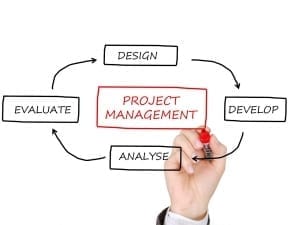Construction Project Management: Top Things to Know

Moreover, one feature of construction projects is that they have a continuous need for modification and as such, project management is crucial to ensuring the stability of an entire procedure. This article offers pertinent information about construction project management and what it entails.
What is Construction Management?
Construction management is a term that is used to refer to a service that implements specialized methods for project management in managing the design, construction, as well as planning of a project, from the moment of its inception through to the end. The processes involved in project management can sometimes be intricate, but the core of management is always the same.
Construction management involves coordinating, planning, and completing a project irrespective of what kind it is (whether residential, commercial, industrial, heavy civil, agricultural). Proper management of projects requires excellent real-time communication between the stakeholders involved.
What makes the process of managing a project challenging is the fact that it requires thorough knowledge in different areas such as law, business, budgeting, and mediation. However, what matters at the end of the day is the successful completion of the client’s construction project.
What are the Key Functions of Project Management?
Every construction project has its objectives that must be met. While that is the case, there is a high possibility that these objectives may end up overlapping. In such circumstances, the construction manager’s role comes in handy because they will need to provide clarity about the situation to avoid costly disputes that could negatively affect the project. With this in mind, it is crucial to understand the critical functions of construction management.
One such functions involve setting clear objectives as well as the project’s scope. This function consists of planning different project parameters such as establishing performance standards, scheduling, choosing project participants, and budgeting. Apart from that, project management involves improving resource allocation through the procurement and ameliorating process. Lastly, project management consists of building reliable channels of communication to prevent as well as resolve disputes during project execution.
Real-time communication
Real-time communication is crucial when it comes to managing a project. Being in a position to communicate the latest happenings (data and information) about an ongoing project in real-time is a fundamental part of project management. Live communication during a construction process can help the manager and team of the project to be informed throughout in regards to the latest changes in the project. When that happens, it becomes possible to tackle costly project delays if they arise and prevent harmful errors before they can occur.
In addition to that, real-time communication can minimize administrative burden. For example, using reliable tools for managing projects allows the manager to create progress reports automatically. This will mean a reduction in the amount of time wasted when creating these reports manually. Moreover, digital tools can enhance the ordering process of materials to keep every team member updated about the current requirement on-site.


 Project management in business can be challenging and so hiring someone who knows what they’re doing and having the right tools in place can make a big difference between your project being a success or a flop. Managing a budget, resources, and the team takes some serious organizational skills so if you want your business project to be a success, here are 5 tips to help you along the way.
Project management in business can be challenging and so hiring someone who knows what they’re doing and having the right tools in place can make a big difference between your project being a success or a flop. Managing a budget, resources, and the team takes some serious organizational skills so if you want your business project to be a success, here are 5 tips to help you along the way.
 If your life is a jumbled mess at work, you’re not alone. Many people feel like they’re running a circus when they walk into their office.
If your life is a jumbled mess at work, you’re not alone. Many people feel like they’re running a circus when they walk into their office.